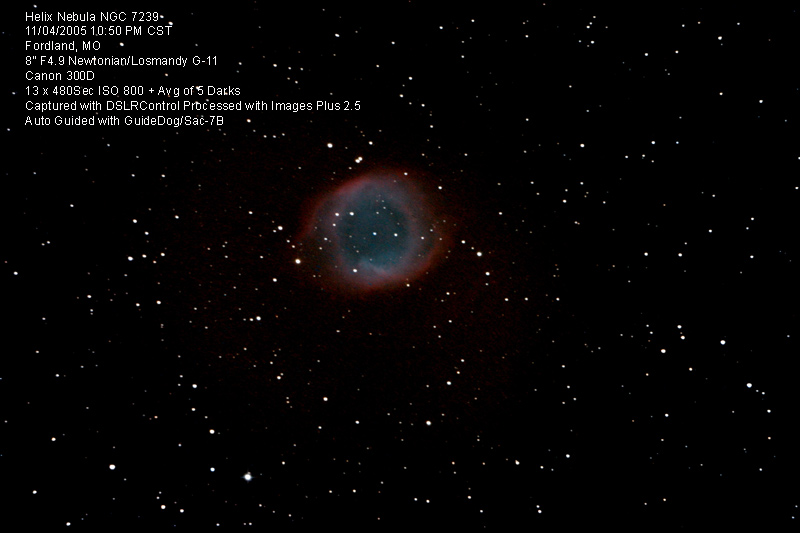
Helix
Nebula (NGC 7239)
The Helix Nebula (NGC 7239) is an interesting example of a "Planetary Nebula". Planetary Nebulae have nothing to do with planets but the term was coined by William Herschel when he discovered several examples that to him looked similar to the planet Neptune. They are generally round and the brighter ones are somewhat blue green in color when viewed through amateur scopes which does indeed make many of them look like Neptune. Planetary Nebulae are the remains of dying stars. They are formed when a star casts off it's outer layers in the process of becoming a white dwarf. The Helix is an unusual example because it has the largest apparent size of any planetary nebula visible through small telescopes. It is relatively dim and somewhat difficult to find since it is in an area of the Southern sky that does not have many bright stars to aid in locating it.
Details:
Imaged on 11/4/2005 at 10:50 PM Central Time from Fordland, MO
Equipment:
Camera: Canon 300D (unmodified)
at Prime Focus
Imaging Scope: 8” F4.9 Orion Reflector
Guide Scope: 120mm F5.0 Orion refractor
Guiding: GuideDog software and SAC-7b camera
Mount: Losmandy CG-11
Image Information:Imaging Scope: 8” F4.9 Orion Reflector
Guide Scope: 120mm F5.0 Orion refractor
Guiding: GuideDog software and SAC-7b camera
Mount: Losmandy CG-11
